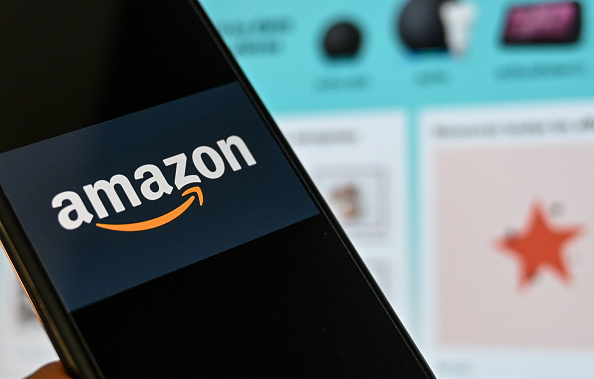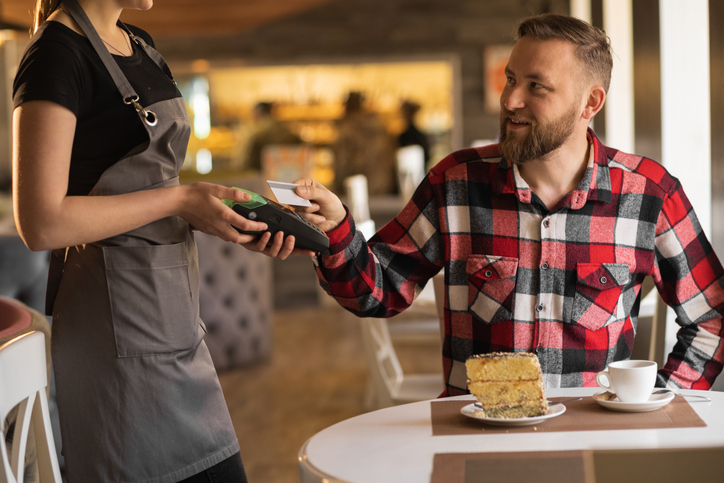Consumers can be decidedly fickle, with only 13 per cent remaining loyal to particular brands, according to McKinsey. Attention spans are shrinking amid a barrage of marketing and advertising messages, while a constant stream of new products and services mean winning and retaining customers takes more effort and investment than ever. Turning your customers into a community is now a key requirement for a business owner in order to thrive.
Andrew Clough, founder and managing director of The Brew, operates in the fast-growth, competitive co-working sector, where he believes operators face a significant challenge to differentiate themselves.
However, with some providers now competing on price, one strategy that has worked well for the company is building a strong member community, both physically through its spaces and events, as well as via online channels.
‘Through helping our members to build connections between themselves, make friends, and by adding value, we’ve been able to simultaneously raise the profile of our own brand and nurture a network of advocates,’ he says.
Clough has discovered that there is a knack to successfully building a community that feels organic and genuinely valuable rather than forced – the key is striking the right balance.
Here, he offers some tips and tricks on how to get it right.
Give your customers what they want
A successful community has to be built around the real wants and needs of your customers and helping them to achieve their objectives. A common error is to make assumptions about what your customers want, without any proof to back them up. Instead, your first step should be to ask your customers what they would find useful. How you go about that depends on what business you’re in, but a personal face-to-face or telephone conversation is best – if you can.
If not, online surveys are a good alternative, but be careful not to presume too much, making sure you include some open questions as well as closed, multiple choice ones, so respondents have a chance to expand their answers and give more detailed opinions. This is where you’ll get some really valuable – and often unexpected – insights.
Don’t detract from your core offering
Always be mindful not to detract from the primary reason customers buy from you – your core product or service. So, at The Brew, our members ultimately come to us because they need somewhere to work, not necessarily because they’re looking for a community. Your aim should therefore be to enhance your primary offering because if your community undermines your raison d’etre, you need to question whether it’s the right strategy.
Remember when Facebook used to make lots of changes to its design and functionality for no apparent reason? Users became extremely unhappy and critical because it made connecting and sharing with their friends more difficult. Likewise, at The Brew, we wouldn’t hold a long event in the middle of the day or right in the middle of the space where people are trying to work.
Personalise your communications
To make your community relevant and attractive to as many people as possible, there has to be something in it for them personally. For example, at The Brew, we know that our members want to grow their businesses, so our core focus is on helping them to do that, with events and initiatives based around the different challenges they’re facing.
We also try to personalise our communications as much as possible, by chatting face-to-face with our members about what’s happening, and where that’s not possible, trying to personalise the messaging and tone of our written communications, and using the channels where our members like to receive information. For example, we don’t find social media that useful, but for some businesses Twitter, Instagram or Snapchat might be a great medium. It all depends on where your audiences hang out.
Promote, promote, promote
For your community to take off, you need to put regular communications channels in place and ensure relevant information is easily accessible, whether through physical notices or on digital channels, such as email, social media and your website or blog. Think about the natural way that people interact with your service and reach them at those touchpoints.
However, it’s important that you don’t make anybody feel like they have to get involved, or make them feel guilty if they aren’t, as some people simply won’t be interested. We try to keep it informal and take an ‘it’s there if you want it’ approach, so nobody is made to feel uncomfortable.
Think about affiliates
Your customers are one side of the story, but if you rely on affiliates or partners to help reach your customers, this is another area that could benefit from a community approach. For example, at The Brew, we work with agents to help fill our spaces, so it’s important that they feel involved in what we’re doing.
Conversations with our agents told us that incentives work really well and as a result, we introduced prize drawers, with winners featured in our light-hearted monthly newsletter. This really helps to differentiate us from the competition.
Be patient
It can be tempting to give up if your community doesn’t catch on in a few weeks, but persevere, as it can take some time, particularly if you’re trying something new and original. For example, our agent newsletter took six or seven months to start getting engagement, but it’s now hugely popular.
However, that’s not to say you should keep flogging a dead horse for months on end with no positive response. To check that you’re heading in the right direction, keep getting regular feedback from your audiences, so you can get an idea whether what you’re doing is starting to have the desired effect.
How can your business build a community that encourages customers to stick with your brand? Erica Wolfe-Murray, of innovation studio Lola, gives examples of businesses that are making a concerted attempt to engage better with their customer base.

For many companies the idea of their customers becoming a community is just a pipe dream, nice to have, gives you a warm glow but is unlikely to be a reality. Followed by the comment that it will cost money/not bring them any benefit – financial or otherwise.
But what they overlook is that we, as humans, love communities. Most of us are exposed to them continually – from our family, our neighbours, our schools, our work places, our local cafes. So how can you build a community that works for you, particularly when your customer transactions are one to one, with no group interactions or engagement?
There are lots of ideas you can call on.
Take 130-year old Benjamin Pollock’s toy shop based in Covent Garden. With one site visited by countless theatre lovers, children and tourists and a website, community would not seem an obvious or idea for them. They know they have passionate followers across social media, have international supporters, as well as many creative industry luminaries as customers – how could they build a community from such diverse ingredients?
Well, that is just the point about ‘community’ – they need to have something to congregate around, which brings them together. In Pollock’s case, it is their love of the quirky wonderful world that is Pollock’s. So rather than build a mailing list-type community, Pollock’s is creating a Fan Club.
“Customers roam around the building after a class and buy other merchandise, so her turnover rises too”
With different levels of membership, members will have access to content, fun ideas, discounts and special products but also, more importantly, to be able to communicate with each other around their passion. And there will be events – organised by third parties – that will happen internationally so people with a passion for Pollock’s can meet up, talk and get their fix.
Communities can bring many other benefits to a company besides just an expanding mailing list. And they don’t have to be big.
Dairy House Antiques on the Wiltshire/Dorset borders is a crammed rambling building full of riches; think of a brocante market on speed. Debbie, who runs it, has a cracking eye with a love of merchandise, but every customer who walks in, walks out with little or no sense of community.
>See more on building a community
Starting small, Debbie is putting this right by hosting a series of unusual events that allow people to meet each other and do something together. Whether that is bulb-planting in beautiful old vases, printing silk from petals, how to silver…a community is building around each course.
The idea is people return to continue working together once their course is over. Customers also roam around the building following a class, buying other merchandise. So her turnover rises too.
What unique communities can you evolve around your work? You may be surprised at just how quickly it grows – particularly if it is in a true alignment with what you do.
Emma McDonald, owner of florist Stems, reveals how she created a customer community that feels organic and valuable.

Stems is a flower shop based in the Scottish Borders specialising in all occasions including weddings and events. I started the business in 2012 aged 21, when my daughter was nine months old.
I was due to return to the normal 9-5, and it didn’t seem logical to put 70 per cent of my wage straight into childcare. I also felt uneasy about letting someone else look after my child, so I decided to start my own business.
I had worked in a flower shop aged 15 and knew the basic techniques, and so I started with £200 and built the business from the ground up.
Social media has been key to building my flower community. I only opened the shop in 2016, so for four years my Facebook page was my shop window. I don’t believe in paid advertising; for me, word of mouth and social has got me to where I am now.
My customers have stuck with me from the get go, when I was designing and selling flowers from my shed. I try to post daily on social media about what’s happening in my business, so everyone knows what we’re up to – the community has become a big family.
My son Cody is key to this messaging. He became the Stems ‘shop baby’ when he was born, with him asleep in his baby carrier, we would design bouquets together. Cody now has his own blog called ‘The Diary of Shop Boy’ on my Instagram, as my flower community are so invested.
Through social media my customers see that when they buy from me, they also support a local family and this reminds people to support small businesses. My kids have unintentionally become my biggest USP!
“Ask your customers and followers questions – it’s called ‘social’ media for a reason”
My advice to build a useful community is to create real relationships with your customers. For me, getting to know my customers and their buying habits is important and [digital marketplace] FlorismartUK allows me to do this in a unique way, providing me with a digital networking and buying platform, connecting me directly with reputable growers, which makes the buying process much smoother and cost effective for me and my customers. It also allows me to stock exactly what my customer has asked for.
Keeping things authentic is key. There’s nothing more disingenuous than impersonal sales posts on social media. There’s a charm to telling your customers things have gone a little pear-shaped as your son has ‘accidentally’ taken some scissors to your just-made bouquet.
Ask your customers and followers questions – it’s called ‘social’ media for a reason. If we have a new variety of flower delivered to the shop, I’ll take a photo and ask their thoughts. Having that conversation makes a community, makes a family.
Summary tips: Turning your customers into a community
- Research the real wants and needs of your customers
- Give your users a personal touch
- Use a variety of promotional avenues to reach and grow your client base
- Be creative about the additional services you offer
- Use affiliates and partners to reach new customers





